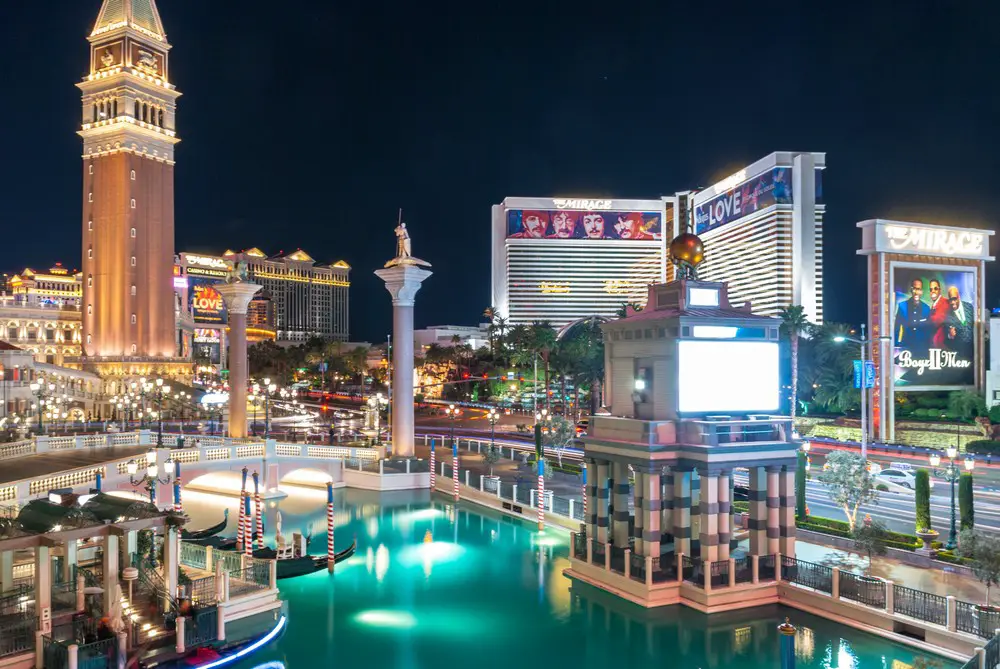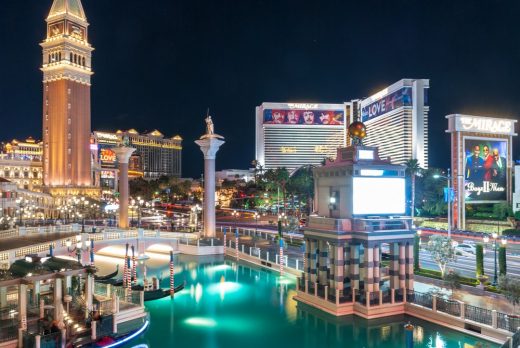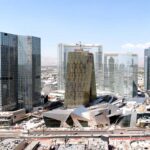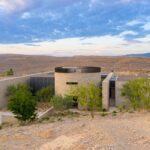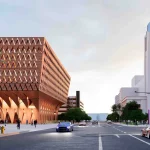What’s behind Vegas’ architecture? NV casino buildings, Nevada gaming resorts, US gambling experience
What’s behind Vegas’ architecture design?
July 20, 2020
Casinos often provide the inspiration for some of the most impressive and iconic architecture. We know this phenomenon of course from the imposing buildings that adorn the famous ‘strip’ in Las Vegas with their overwhelming presence. No wonder, casinos have to attract audiences and enthuse people to enter. The more glamour, attention and publicity, the better. Get to know more about iconic top architecture of casinos in this article.
What’s behind Las Vegas architecture
Interest in Las Vegas architecture began in the late 1960s, when in 1967, architects Robert Venturi and Denise Scott Brown traveled to the city with students to study its architecture. Together with Steven Izenour, they wrote a report in 1972 on the subject entitled Learning from Las Vegas: The Forgotten Symbolism of the Architectural Form.
This report, and his thesis that Las Vegas led the way for architecture at the end of the 20th century, brought the city to the attention of the architectural world. A quarter of a century later, for a BBC programme (a segment of The Late Show entitled “Virtually Las Vegas” broadcast on BBC Two on 1995-01-16), Venturi and Scott Brown revisited the city and revised their opinions.
During the 70s, Venturi observed that the city was then structured around the then dominant automobile culture, with all the buildings facing the motorway. It was standard for the buildings to have “flash in the front and conventional style in the back”, this means a decorated front visible from the highway but a less decorative or non-visible aspect on the backside of the building. Casinos and motels also had a parking lot on the ground floor at the front, between the building and the highway, a feature that Venturi considered distinctive. They also contrasted the artificially lit and air-conditioned interiors of the buildings with the heat and glare of the “agoraphobic desert on an automatic scale”.
In the 1990s, Venturi and Scott Brown observed that the automobile architecture of the 1960s had been transformed into a more pedestrian form, in part because of the growth in visitors it had experienced over the years. Distinctive neon lighting, which in the 1960s had had Venturi et al. referring to Vegas as a city of signs, had been replaced by giant television screens, which Venturi lamented. In their original book, and in the latest revised edition of 1977, they focused on characterizing Vegas in terms of how most objects built in the (then) city functioned in one way or another.
In the 90s, Mark C. Taylor had the opinion that the similarities between Disney and Las Vegas that Venturi et al. had touched upon in the 1970s had grown immensely over the years, with much of the urban space being devoted to fantasies about fantasies and “worlds within worlds”. He observed that this architectural link with Disney had even been realized, with the MGM Grand Hotel directly imitating (albeit with some differences) the original Walt Disney World. Disney World was even in direct competition with the Las Vegas strip as both places were (and are) known for being the biggest entertainment hubs of the United States and arguably even the planet. A Dutch architect is planned to rethink the architecture of this part of Las Vegas Boulevard in the near future to adapt it to the needs of modern times.
Thanks to the functionality of the architecture of Las Vegas’ casino’s it is widely known as a Mekka for small time gamblers and high rollers alike. People who don’t wish to spend a fortune on such a trip or can do without all the extravagant architecture, can enjoy taking a chance on websites. Unlike a land-based casino, you are not limited by floor-space while it is as immersive as playing in the Bellagio, thanks to their latest immersive 3D titles.
Comments on this What’s behind Vegas’ architecture? article are welcome.
Las Vegas Buildings
Las Vegas Buildings
Vdara Hotel Las Vegas
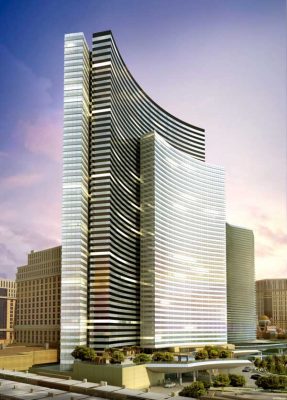
image : CityCenter Land, LLC
Property Design
Contemporary Property Designs – recent architectural selection from e-architect below:
Comments / photos for the What’s behind Vegas’ architecture? page welcome

